- Joined
- Oct 4, 2021
- Messages
- 2,540
I wasn't thrilled with the coated diamond plates that came with my KME, so I recently picked up a set of bonded diamond stones from Columbia Gorge Stoneworks (CGSW). They're available from Gritomatic and the full set (160, 80, 40, 20, 10, 5 micron) costs $160, which is a pretty good deal compared to the Venev set which goes for $225.
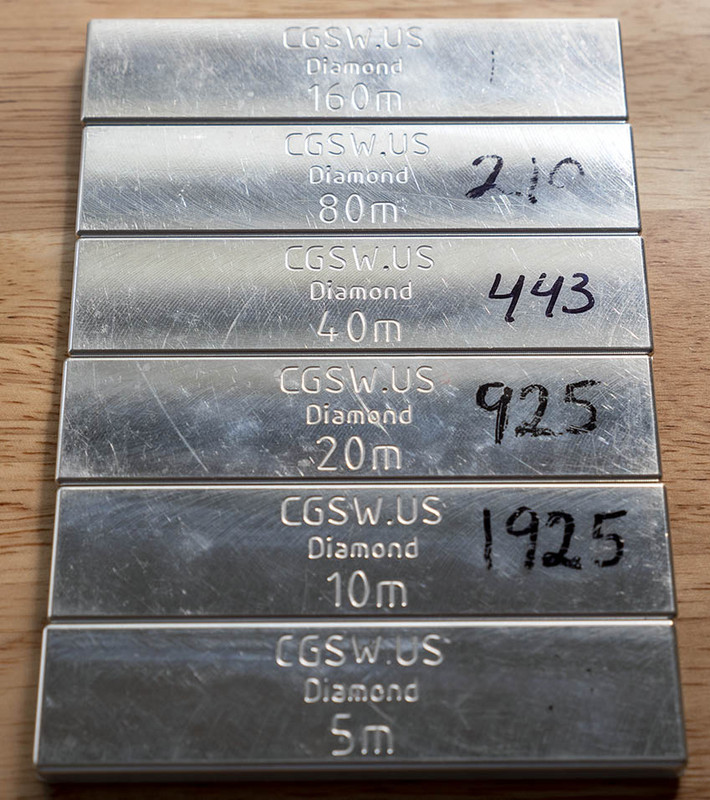
First impressions
My first impressions of the stones was ... not good. They didn't seem to cut at all and it felt like trying to sharpen with a pool tile. Clearly the stones needed to be lapped before use, which is a bit of a drag but not a big deal. 30 minutes later, after going to work with a piece of float glass and 120 grit silicon carbide powder (more on that later), I was starting to enjoy my purchase. There's no break-in with these stones as there is with coated diamonds, which can be harsh for the first few sharpenings. If anything, the bonded stones seem to be cutting better with use. Granted, I've only used them on five blades to date, but several of those involved lowering the bevel angle several degrees, so there was a fair amount of work involved.
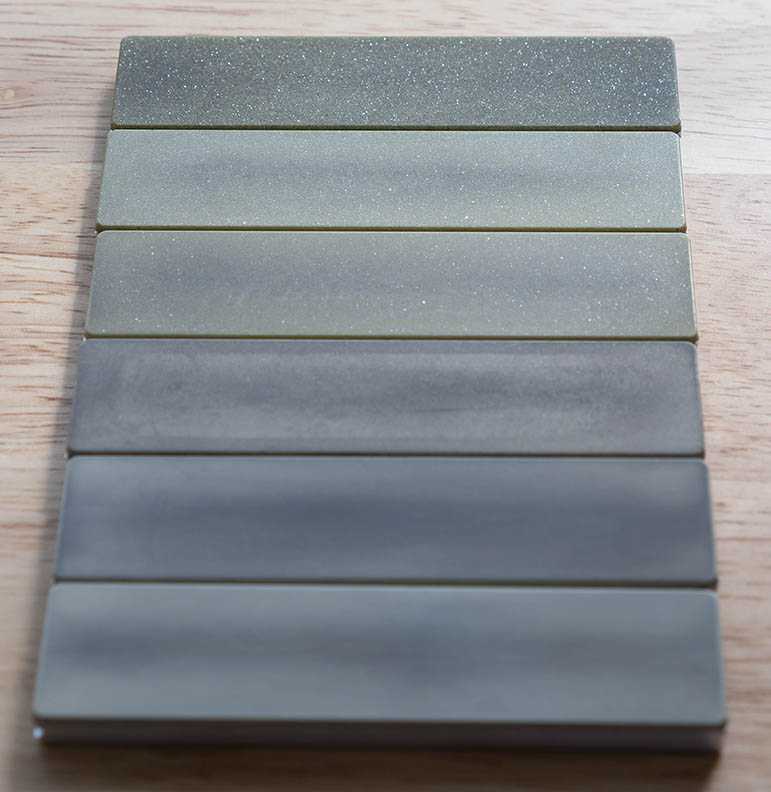
In use
The 160 micron is the coarsest stone, which translates to about 90-120 grit in general grit parlance. I didn't get the best performance out of it until I lapped it with F60 silicon carbide powder. Even now the 160 micron isn't super aggressive and if I need to remove a lot of material I find I'm better off starting with the Shapton Pro 120 stone, which doesn't load up as fast and can take some muscle. Once I get very close to the apex I switch to the 160 micron and it makes quick work of the last bit while refining the scratch pattern.
From that point I'm just going through the grit levels. I find about three passes per side is sufficient, and I'm using edge leading and trailing strokes, which is contrary to CGSW's recommendation, which is to use edge trailing only. Maybe that would be better, but life is too short. In any case, I'm very happy with the results I'm getting now. I should mention that I'm using water as a lubricant, which is recommended by CGSW. I may switch to a light oil because the stones absorb zero water and it's very hard to keep water on them.
I find that the stones above the 160 micron level cut reasonably quickly. They also load up fairly quickly and I find myself cleaning them with water and a rust eraser after sharpening one side. That may be overkill, but it's what I'm doing right now.
What it gets you
If you go through all of the stones you end up with a near-mirror finish -- very nice indeed. In fact, I found that the appearance of my edge was getting worse when I followed the 5 micron stone with KME's 3 micron lapping film! At first, I thought it was my imagination, as the lapping film ... even a 6 micron film, let alone 3 micron, should produce a better result than a 5 micron diamond stone. So I finally whipped out my handy-dandy USB microscope, and this is what I found:
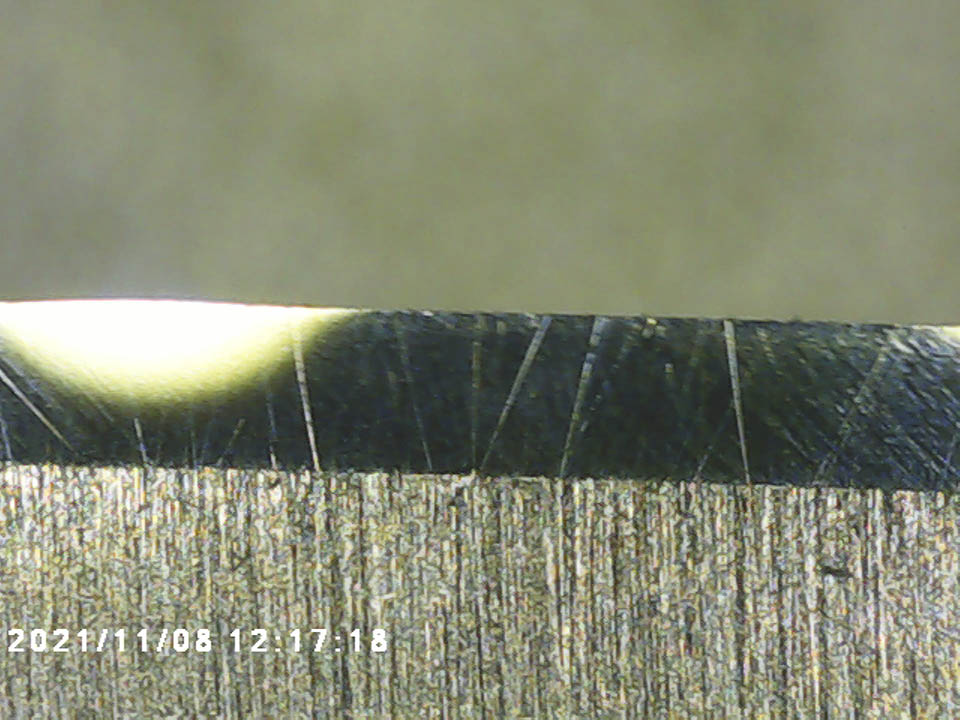
Above is the bevel after the CGSW 5 micron stone.

Above is the bevel after the KME 3 micron lapping film.
Say what? Clearly the CGSW abrasive is more uniform than KME's lapping film. What's more, I found the same result with the KME 1 micron lapping film! In contrast, I found that the KME kangaroo strops with .5 and .1 micron CBN emulsions worked great and produced a true mirror finish. In the future I will drop the lapping films and go exclusively with the kangaroo strops and emulsions.
Final thoughts
Of course, you might not want to spend the time to get a mirror finish, or you might simply prefer a toothier edge. In that case there is no reason to go beyond the 20, or even the 40 micron CGSW stones, which produce a sharp edge and a nice satin finish.
Unfortunately I can't compare these stones to the Venev equivalents, which I haven't had the opportunity to try, except to note that the Venev's are more expensive. They also have a thicker layer of abrasive (2mm vs. 1.6mm for CGSW). My impression is that thickness of the abrasive layer isn't an issue, however, as the CGSW resin is extremely hard and I expect that the stones will last many years, and will perhaps outlive me.
As far as cleaning the stones goes, the manufacturer (who I believe is a member of this forum under the screen name "diemaker?) recommends using rubbing alcohol, although he says the discoloration doesn't affect performance. Because the stones are so hard I don't think they will have to be lapped/flattened often. I would guestimate after maybe 15-20 blades, but that's just a guess as I haven't gotten to that point yet.
It's worth mentioning that CGSW is also the producer of the well-known Edge Pro Matrix stones, and I would assume that these KME stones are essentially identical to those, aside from being 2" shorter and about half the cost!
Conclusion
In conclusion, I highly recommend the CGSW bonded diamond stones for KME. They appear to be quite durable, they cut reasonably quickly, and they produce a superb finish. They cost more than the KME Gold coated diamond plates, but I think they will last at least four to five times as long.
Result:
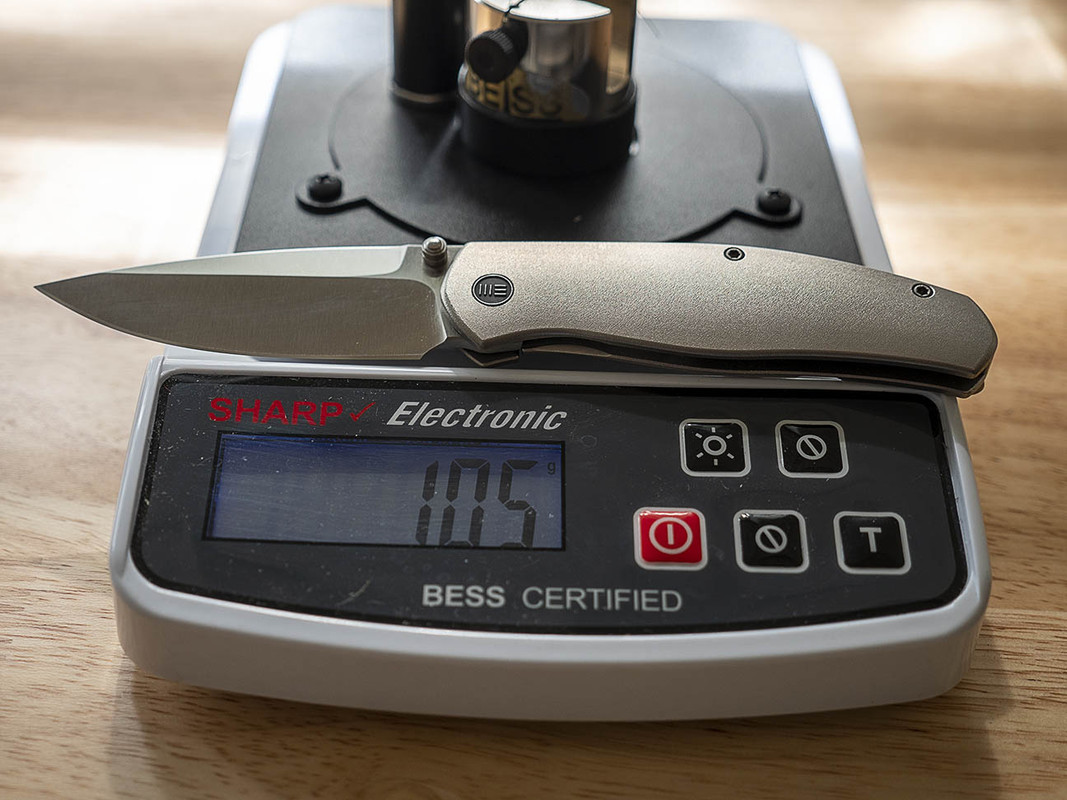
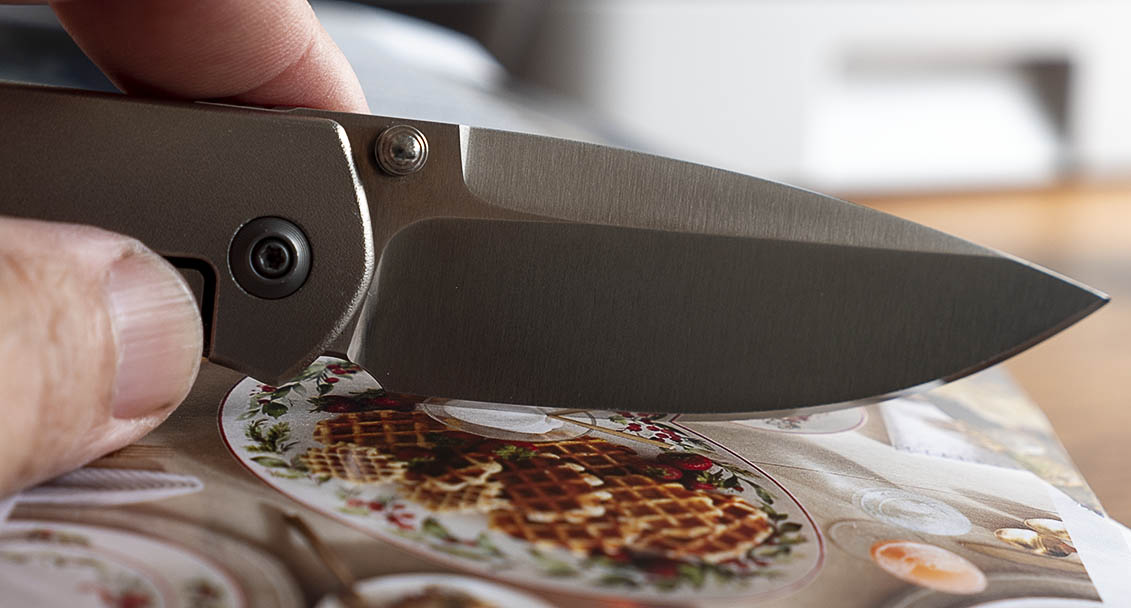

First impressions
My first impressions of the stones was ... not good. They didn't seem to cut at all and it felt like trying to sharpen with a pool tile. Clearly the stones needed to be lapped before use, which is a bit of a drag but not a big deal. 30 minutes later, after going to work with a piece of float glass and 120 grit silicon carbide powder (more on that later), I was starting to enjoy my purchase. There's no break-in with these stones as there is with coated diamonds, which can be harsh for the first few sharpenings. If anything, the bonded stones seem to be cutting better with use. Granted, I've only used them on five blades to date, but several of those involved lowering the bevel angle several degrees, so there was a fair amount of work involved.

In use
The 160 micron is the coarsest stone, which translates to about 90-120 grit in general grit parlance. I didn't get the best performance out of it until I lapped it with F60 silicon carbide powder. Even now the 160 micron isn't super aggressive and if I need to remove a lot of material I find I'm better off starting with the Shapton Pro 120 stone, which doesn't load up as fast and can take some muscle. Once I get very close to the apex I switch to the 160 micron and it makes quick work of the last bit while refining the scratch pattern.
From that point I'm just going through the grit levels. I find about three passes per side is sufficient, and I'm using edge leading and trailing strokes, which is contrary to CGSW's recommendation, which is to use edge trailing only. Maybe that would be better, but life is too short. In any case, I'm very happy with the results I'm getting now. I should mention that I'm using water as a lubricant, which is recommended by CGSW. I may switch to a light oil because the stones absorb zero water and it's very hard to keep water on them.
I find that the stones above the 160 micron level cut reasonably quickly. They also load up fairly quickly and I find myself cleaning them with water and a rust eraser after sharpening one side. That may be overkill, but it's what I'm doing right now.
What it gets you
If you go through all of the stones you end up with a near-mirror finish -- very nice indeed. In fact, I found that the appearance of my edge was getting worse when I followed the 5 micron stone with KME's 3 micron lapping film! At first, I thought it was my imagination, as the lapping film ... even a 6 micron film, let alone 3 micron, should produce a better result than a 5 micron diamond stone. So I finally whipped out my handy-dandy USB microscope, and this is what I found:

Above is the bevel after the CGSW 5 micron stone.

Above is the bevel after the KME 3 micron lapping film.
Say what? Clearly the CGSW abrasive is more uniform than KME's lapping film. What's more, I found the same result with the KME 1 micron lapping film! In contrast, I found that the KME kangaroo strops with .5 and .1 micron CBN emulsions worked great and produced a true mirror finish. In the future I will drop the lapping films and go exclusively with the kangaroo strops and emulsions.
Final thoughts
Of course, you might not want to spend the time to get a mirror finish, or you might simply prefer a toothier edge. In that case there is no reason to go beyond the 20, or even the 40 micron CGSW stones, which produce a sharp edge and a nice satin finish.
Unfortunately I can't compare these stones to the Venev equivalents, which I haven't had the opportunity to try, except to note that the Venev's are more expensive. They also have a thicker layer of abrasive (2mm vs. 1.6mm for CGSW). My impression is that thickness of the abrasive layer isn't an issue, however, as the CGSW resin is extremely hard and I expect that the stones will last many years, and will perhaps outlive me.
As far as cleaning the stones goes, the manufacturer (who I believe is a member of this forum under the screen name "diemaker?) recommends using rubbing alcohol, although he says the discoloration doesn't affect performance. Because the stones are so hard I don't think they will have to be lapped/flattened often. I would guestimate after maybe 15-20 blades, but that's just a guess as I haven't gotten to that point yet.
It's worth mentioning that CGSW is also the producer of the well-known Edge Pro Matrix stones, and I would assume that these KME stones are essentially identical to those, aside from being 2" shorter and about half the cost!
Conclusion
In conclusion, I highly recommend the CGSW bonded diamond stones for KME. They appear to be quite durable, they cut reasonably quickly, and they produce a superb finish. They cost more than the KME Gold coated diamond plates, but I think they will last at least four to five times as long.
Result:


